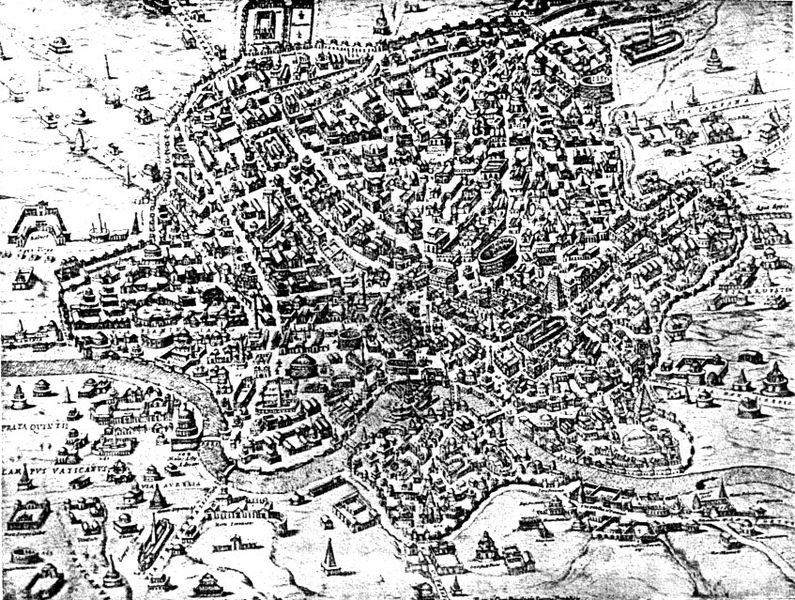 |
| Image of Rome from the 15th century. Images of Vatican City, Rome above and here are all courtesy of Choate Rosemary Hall. |
Successful urban configurations are the result of a complex sequence of implicit computations that transform unorganized input into organized output. Although that is exactly what they do, few urbanists discuss their work in these terms. I propose a fundamental distinction between the principal methods of urban computation. One algorithmic process for urbanism leads to formal planning, which lacks the complex organizational structures that support essential adaptability. This closed computational method uses a set of fixed, or formal, rules to compute a configuration that does not adapt interactively during execution. Such algorithms perform each computation based upon predetermined rules, and those rules cannot be changed via any interaction. The other method of urban generation is achieved by means of interactive computing, which is the basis of human intelligence. An interactive computational method generates adaptive organic urban fabric, as seen in both traditional cities and squatter settlements. Adaptive computational systems necessarily rely upon interaction with their situational environment. In this interactive approach, the result of each step in the sequence of computations is fed back into the algorithm so as to influence the subsequent step. The algorithm itself changes by interacting with whatever it is computing. Interactive or intelligent computing, therefore, is not equivalent to computations that rely exclusively upon a fixed algorithm. These two diverse computational methods design two morphologically distinct types of urban fabric. Also included in this discussion are urban morphologies that have no computational basis, as well as those that are deliberately random.
Read the essay by Nikos A. Salingaros: URBANISM AS COMPUTATION
Read the essay by Nikos A. Salingaros: URBANISM AS COMPUTATION



No comments:
Post a Comment
Note: Only a member of this blog may post a comment.